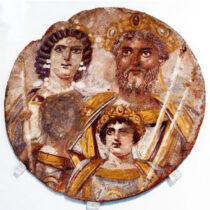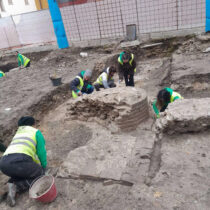Historical geographers with an interest in cities have been concerned with two interrelated issues, that of the city itself and its buildings and with the more general concept of urbanism (the general economic, social, political and cultural process which the built form of the city variously represents and expresses). In terms of the city itself, two aspects have been dominant; that of its morphology (its spatial arrangement) and that of its social and economic function. Debate has surrounded both the nature of these two and the extent to which, either aspect has been dominant over a period of time.Motivated by David Harvey’s notion that the single greatest continuity in the history of urbanism is that of urbanism as mode of production (the city as the organiser and geographical focus of surplus production, surplus accumulation and variously, under feudalism and capitalism, of surplus redistribution or market exchange), historical geographers tried to establish precisely how this theory manifests iteself under different technological circumstance. This has led them in different directions. Some have sought to see how increasingly large and sophisticated cities organised their own space and internal functions, and have charted the rise of the ordered city in which segregation and the articulation of functions led to an increasingly coherent pattern of spatial display. Such models not only draw upon economic theories of land-market organisation, in which the underlying evaluation and exchange of land increasingly determines the functions which it is forced to sustain, but also upon theories of Social Darwinism which have sought to explain the distribution of different population groups, social classes and life-cycle related migrations. From such material, historical geographers have fashioned spatially dynamic models of the modern industrial city as well as of the feudal pre-industrial city, though controversy rages over the latter, based upon the division between those who envisage the feudal city as being constructed upon an actively negotiated land market, and those who believe that its order and arrangement stemmed from more socially-based (i.e., more strictly feudal) considerations. These approaches to the form of the city only serve to emphasise its dynamically changing nature. Others have sought to interpret the pattern of urban distribution and the links – first local, then regional and ultimately national and international- which have sustained urbanism, increasingly disconnecting it from its intimate relationship with the local hinterland, and, through exchange, forged new nation-states and new international polities. Here theories both of diffusion through improvement in transport and communication (see telecommunicate functions of the urban network in the modern era) and of hierarchical dominance have encouraged a wider focus in terms of spatial scale and urban influence. These two approaches, that of form versus function and intraurban versus inter-urban perspectives, have been complemented by a much more general argument concerning the fundamental nature of urbanism, irrespective of period or place. Here competing theories of urbanism (from its origins down to the present) exist: Urbanism as an economic phenomenon (a mode of surplus extraction and redistribution), as a social phenomenon (a means of organising a collectivised but unequal civil society), a political phenomenon (the control, through urban networks, of the nation state as well as everyday lives) and as cultural phenomenon (the expression and representation of symbolic knowledge). Recent comparisons between the decline of the physical city and the contrasting vigour of urbanism in the post-modern period serve only to highlight the extent to which form and function, the city and urbanism both came together in a perfect synthesis during the early modem and modern periods in Western Europe and are now once again coming apart. Finally, historical geography’s willingness to engage in the widest historical perspective -from urban origins in 5,000 BC to the present globalised urbanism of the postmodern period- ensure that the place of the city and urbanism within geographical study remain controversial, subject to constant re-interpretation and uniquely stimulating.
The city, urbanism and the study of historical geography
21 Aug 2012
by Archaeology Newsroom
- A
- A
- A


